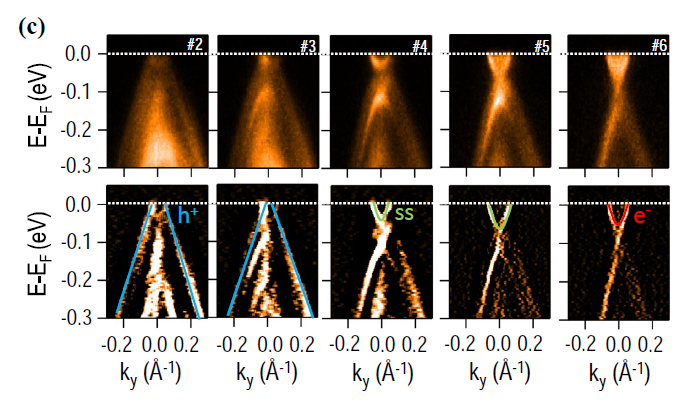Angle Resolved UV Photoelectron Spectroscopy (ARUPS)
Angle resolved UV photoelectron spectroscopy (ARUPS) uses photons in the ultraviolet energy range, for example He I (21.2 eV) or He II (40.8 eV), to extract electrons from the valence bands of a sample. In an ARUPS experiment, two important quantities are recorded: First, the binding energy of the electrons in the valence electronic states and, second, the angular distribution of the emitted electrons. This angular distribution is directly related to the momentum of the electrons prior to photoexcitation, because the momentum parallel to the surface is conserved during the photoelectric effect. Thus, it is possible to directly measure the band-structures in the examined specimen with ARUPS. In the early days of ARUPS, it was necessary to rotate the sample extensively relative to the electron analyser. However, modern electrostatic hemispherical analysers, such as the DA20 and DA30 are capable of scanning different emission angles in a fixed geometry of analyser and sample.

